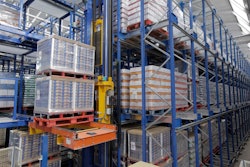
Of the five core tenets of high-performance supply chains—customer-centricity, segmentation, synchronization, business agility and optimization—segmentation represents the most fundamental evolution in supply chain thinking. Manufacturing and distribution companies must cater to a wide range of customer needs as they serve increasingly diverse markets across dynamic global economies. Understanding these needs and crafting attractive value propositions to serve them accordingly is becoming increasingly critical for profitable growth and business retention. Clearly, a one-size-fits-all supply chain strategy cannot adequately or profitably achieve this goal. Instead, companies must segment supply chain operations to balance the cost to serve with the value to the business for each segment.
As an example, if you are a large consumer goods company with a significant portion of your revenue coming from Walmart, you likely have a team and a set of strategies dedicated to that account. The value of its business to you warrants this level of service. However, the cost-benefit ratio would not be positive if you applied this strategy to every mom-and-pop store that also buys your products. You probably have a different supply chain strategy for those customers.
Employing different strategies to serve different customers and channels based on their value to your business is what supply chain segmentation is all about. While the differences between supply chain segments may not always be as dramatic as the Walmart example, the principles and potential value are the same. That is why it is important to understand the ways companies are segmenting their supply chain strategies, how this segmentation impacts each supply chain process and the role technology plays in enabling profitable segmentation.
Defining Supply Chain Segmentation
Information technology (IT) research and advisory firm Gartner describes supply chain segmentation as “designing and operating distinctly different end-to-end value chains (from customers to suppliers) optimized by a combination of unique customer value, product attribute, manufacturing and supply capabilities, and business value considerations. In essence, supply chain segmentation is the dynamic alignment of customer channel demands and supply response capabilities optimized for net profitability across each segment.”1
This comprehensive definition covers a lot of ground, so let's break it down into simpler terms. First, you want to group elements of your supply chain based on their value to your organization. This could be done by:
- Customers as in the Walmart and mom-and-pop stores example.
- Products. Certain products may be key for growth strategies, for the customers who order them or for the volume of sales they generate (think of the 80/20 rule).
- Channels. Fulfilling direct-to-consumer orders is quite different than fulfilling orders from major retail or business-to-business customers.
- Regions. Supply chains in Brazil, Russia, India and China (BRIC countries), and emerging markets are usually significantly different from those in the U.S. or western Europe.
A supply chain segment can be defined as a grouping based on one or more of any of the above categories, such as high-volume products sold to Walmart's China operations, based on their value to the organization. That value may be defined by volume, revenue, profit margin, strategic importance or any combination of these factors.
The second element of segmentation is the cost to serve. It is likely that the cost to serve a customer in Germany for a French company is quite different than for that same company to serve a customer in India, for example. Determining the cost to serve across extended supply chains requires visibility into many cost factors. These may be difficult to obtain, so intelligent approximations may be used. Each segment represents a unique value to the organization along with the corresponding cost to serve. Offering differentiated service across these segments, profitably, is the goal of supply chain segmentation.
Supply Chain Segmentation at Work
While a company's physical assets—raw materials, factory resources, warehouses, distribution centers and channels—may be the same across all segments, its processes and policies for predicting customer demand and positioning supply can be different from one segment to another. It is in defining these processes and policies that supply chain professionals help drive competitive advantage and profitable growth. Let's take a look at a product-based segmentation example to illustrate how business growth strategies may be supported with supply chain segmentation.
For instance, suppose a manufacturing company makes and sells 1,000 products globally. The company predicts that 50 of these products are critical market share growth drivers going forward. This U.S.-based company decides to roll out these new products to the North American market first, with expansion to other markets to follow incrementally. Thus, this segmentation strategy is based on the intersection of product, strategic importance and region.
Demand Planning
Since these are new products (or existing products positioned in new ways), the company cannot forecast demand based on past sales history alone. The segmented approach to forecasting demand for these 50 products requires market intelligence on similar products and markets, along with close collaboration with marketing and sales personnel. These products need to be tracked differently to monitor market acceptance, with more frequent plan-do-check-act feedback cycles relative to other products in the company's portfolio. Therefore, the company needs to deploy segmented demand forecasting techniques and performance tracking to support its business strategy for focused growth.
Inventory Planning
A key success factor for rapid-growth products is inventory availability and corresponding customer service levels. The company's decision to pursue market share growth through the 50 products requires an adjustment to inventory policies associated with these products in North America. Higher service levels demand higher investments of working capital in inventory. So the segmented approach to inventory planning for this subset requires an increase in service levels on these products in North America (say, to 99 percent), and perhaps a corresponding decrease in service levels on other products that the company is not marketing as aggressively (say, to 95 percent). As was the case with demand planning, inventory and customer service performance related to these 50 products need to be monitored differently, in line with the company's business strategy for focused growth on these products.
Master Planning and Replenishment
Producing goods to meet higher service levels on the strategic products may have significant impact on manufacturing and replenishment policies. Demand prioritization policies may need to be adjusted to increase the planning priority associated with these products. If delivery lead times are a competitive differentiator, positioning these products in finished goods form (make-to-stock), closer to customers, may become a priority.
Do manufacturing or replenishment postponement strategies (such as build-to-forecast to a semi-finished stage and assemble-to-order thereafter) still make sense for some of these products? Perhaps they still do, but they need to be deployed differently. As the company strives for profitable growth leveraging strategic products, master planning policies for production and replenishment planning policies for distribution need to be tailored accordingly to serve this segment effectively.
Allocation Planning and Order Promising
As the company strives for market share growth in North America, finished goods supply from across the company's global manufacturing facilities need to be allocated more heavily toward North America to support the expected spike in sales on these strategic products. As such, the company needs to adjust its allocation policies to make sure that projected supply is assigned appropriately across regions, in line with its business growth strategy. With suitable allocations in place, order promising in North America should result in short lead times even with rising demand.
On the other hand, unexpected demand in Europe or Asia Pacific would be promised longer delivery lead times because of limited supply allocations, in line with the business strategy. Strategic segmentation-based allocation planning and order promising helps balance value to the business against service levels required to support corporate objectives.
Profitable Execution
The best-laid plans for your strategic products can be undone during execution if the cost to serve becomes too high. There are several factors that need to be considered. First, the company wants faster cycle times and reasonable costs to fulfill high-priority orders of strategic products. Warehouse slotting needs to be adjusted to place the strategic products in forward pick areas so workers can access them faster with less travel. This helps reduce cycle times and costs.
Second, labor management systems could help reduce the effort and expense for receiving, replenishment, picking, and shipping these strategic products by instituting best practices and standards for performing each task. The work is monitored in real time so supervisors can quickly make adjustments when work falls off schedule.
Finally, higher service levels for strategic goods may require faster replenishment. This often means smaller, more frequent shipments, which raise transportation costs. Therefore, transportation expense must also be considered as part of the cost-to-serve model that is balanced against desired service levels. Careful planning of shipments associated with strategic products, including load consolidation, mode selection, routing and carrier selection, can significantly reduce transportation costs while ensuring high service levels.
The business strategy in this simplified example was to drive profitable growth through focusing on a subset of products in one specific region. That segmented business strategy required a segmented supply chain response, including specific adjustments to demand, inventory, master planning, replenishment, allocation, order promising, warehouse, workforce and transportation management processes. In doing so, even though physical resources remain the same, the end-to-end value chain for strategic products operates differently from the value chain for all other products. That is supply chain segmentation at work.
Technology Enablement
Segmentation strategies impact all aspects of supply chain operations, as demonstrated above. They require careful analysis, planning and monitoring to balance higher service levels with associated cost to serve. While conceptually appealing, companies long struggled to deploy segmented supply chains because underlying decision-support technologies were not readily available for end-to-end value chains. The good news is that much changed with technology over the past few years. The technology is now ready. Are you?
1 Gartner IT Glossary, Gartner.com, 2013.















![Pros To Know 2026 [color]](https://img.sdcexec.com/mindful/acbm/workspaces/default/uploads/2025/08/prostoknow-2026-color.mduFvhpgMk.png?ar=16%3A9&auto=format%2Ccompress&bg=fff&fill-color=fff&fit=fill&h=135&q=70&w=240)



